
ASIFE/iStock/Getty Images
Some foods occupy a place so far outside of the mainstream that they stymie even the most adventurous of cooks. A fine example is tripe, a "variety meat" that's cherished from Paris and Madrid to Beijing but conspicuously absent from most North American restaurant menus and supermarket meat counters. The pale sheets of tripe are a cow's stomach walls, disconcerting because of their less than meat-like texture and odd smell. Still, when cooked with care, tripe shows why it’s earned a place as a classic of both peasant and royal cookery.
A Quick Introduction
Cattle have multiple stomachs, three of which are often sold as tripe. The first is smooth and flat, and is known as blanket tripe. The second has a honeycombed liner, and -- as "honeycomb" tripe -- is the most widely sold in the United States. The third stomach produces distinctively layered tripe, generally sold as book tripe or leaf tripe. All three are supremely tough and require long, slow cooking to tame their leathery texture to something resembling the consistency of well-cooked calamari, or al dente pasta.
Basic Preparation
Honeycomb tripe's grid of cell walls can trap grit and debris, so if you purchase your tripe in its natural state, you'll need to rinse it thoroughly. Peel off any small pieces of fat that adhere to the tripe and cut it into smaller portions if it's in a single large sheet. Cover the portions with cold water and soak them for about an hour, then drain them and put them in a pot with fresh water. Bring the water to a low boil, and simmer the tripe for about 15 minutes to blanch it. Soaking and blanching helps reduce the tripe's legendary odor. Often tripe is sold already blanched, so you might not have to do this at home.
Long, Slow Cooking
The most important step in tripe cookery is a long, slow simmer. Cover the blanched tripe with fresh water -- or broth, other cooking liquid -- and bring it just to the verge of boiling. Let it simmer, topping up the liquid occasionally, until it's very tender when pierced with a fork. That can take 4 to 6 hours, and you'll probably need to top up the liquid a time or two. The steam that escapes while the tripe is cooking can have a very funky smell, so turn your range hood's vent fan to its highest setting and open some windows. You might even choose to do this outdoors.
The Fine Details
Where tripe dishes vary is in their choice of cooking liquid. If you're preparing tripe as an ingredient to use in other dishes, you might opt to simmer it simply in water, with general-purpose flavorings such as onions, garlic and thyme. The classic version from Normandy, tripe "a la mode de Caen," uses Calvados, the region's famed apple brandy, in the poaching liquid, along with a bouquet of herbs and calves' feet for extra body and tripe from a fourth stomach. As a broad rule, cooking liquids that will become part of the final dish are more heavily seasoned.
A Few Suggestions
Like some of the more intricate pasta shapes, honeycomb tripe has a remarkable ability to retain sauce. If you're new to tripe, cut it into thin strips or bite-sized squares and simmer it in your favorite tomato sauce. Tripe has a tofu-like ability to absorb flavors from its surroundings, so in Spanish dishes it's often combined with intensely flavored ingredients such as chorizo sausage or dry-cured ham. The same holds true when the tripe is cooked in deeply flavored soups, such as menudo.
Related Articles
How to Cook Honeycomb Beef Tripe
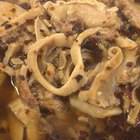
Types of Beef Tripe
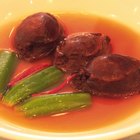
How to Cook Abalone

How to Eat a Quince

How to Make Fish Stock
What Can I Make With Cajun Pork Tasso?

How to Make Soup Out of Pulp From ...

How to Blanch Bitter Greens for Italian ...
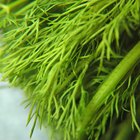
Classic Russian Spices
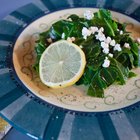
How to Cook Chard

Blanching Meat
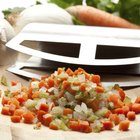
Italian Cooking Term for Celery, ...

How Long Do You Cook Shank Meat for ...

How to Steam Cook Bratwurst

How to Cook Collard Greens Without Meat

Cornstarch vs. Flour in Shepherd's Pie
How to Boil Pork Jowl Bacon

Difference Between Gumbo and Etouffee

How Do I Cook Pork Spine?

How to Cook a Deer Brisket
References
Resources
Writer Bio
Fred Decker is a trained chef and prolific freelance writer. In previous careers, he sold insurance and mutual funds, and was a longtime retailer. He was educated at Memorial University of Newfoundland and the Northern Alberta Institute of Technology. His articles have appeared on numerous home and garden sites including GoneOutdoors, TheNest and eHow.
Photo Credits
ASIFE/iStock/Getty Images